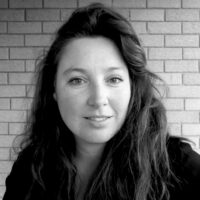
Q&A with Amanda Williams
21.10.20
Sydney-based artist Amanda Williams will be premiering a new work at PHOTO 2021 in partnership with the Metro Tunnel Creative Program. Here she tells us about her belief that history is a construct, and why it is important for her to know the Aboriginal language group for the Traditional land she works on.
What started your relationship with photography?
My relationship with photography is closely tied to the house I grew up in, a generic blond brick house in north west Sydney. Inside the house was a cabinet filled with family photo albums, yellow Kodak envelopes and narrow boxes of 35mm photographic slides. I have vivid memories of shuffling through the cabinet, attempting to make sense of tiny details with my mother beside me, narrating and pointing out people and places in the photographs. In addition to the cabinet inside the house, the garage contained my father’s vast and unwieldly collection of random ephemera found at car boot sales and car swap meetings. This included his collection of dusty 19th century photo albums, framed portraits of strangers, tintypes, 35mm film reels, slide projectors and cameras.
This formative introduction to ‘photography’ developed my understanding that photography could be many things and also do many things and importantly, it was a material object. It could be proof that someone existed, proof that a special event had taken place. It could also be a series of objects stacked on a shelf or a shiny, transparent slide, brought to life by a projector or an arm outstretched toward the light.
I look back and realise the entire house, in a broad sense, was both a machine and a repository for memories with photography facilitating and representing that memory.
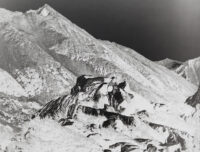
Amanda Williams, Ansel Adams, Grand Sentinel, Kings River Canyon (Proposed as a national park), California, 1936/2019, The Ansel Adams Mural Project 2019
What is your motivation for making art?
My motivation for making art is driven by a desire to understand the world around me, to connect with the past in order to better understand the present. I am also motivated by the history of photography itself, questioning the mechanism of representation and the distinct and at times problematic power that photography wields.
How has your practice changed over time?
My practice has always been tied to an exploration of place, often working with the space that directly surrounds me. After high school I enrolled in a Bachelor of Arts Degree and the subjects I studied continue to inform my work today: archaeology, classical mythology, ancient civilisations, Middle European history, Film studies and Art history, all guided by a framework of post-structuralist thought.
Following this and a few years working in the film industry, I went to art school at the University of NSW and was incredibly fortunate to have been taught by inspiring female photographers and academics including Debra Phillips, Lynne Roberts Goodwin and Anna Munster, each offering a very particular view of contemporary photography and media arts practice. The feminist focus and drive that now informs my work began here. I was trained in B&W and colour analogue darkroom processes – 35mm, medium and large format film cameras, at a time when media theory was grappling with the real and the virtual and digital materialisms. So, concepts of place, the real, analogue technology and time as a historical construct in its material form, has always been and remains a big part of what I am investigating.
How do ideas relating to 'The Truth’ factor into your practice?
Ideas relating to ‘truth’ do factor into my practice in two ways. First, my ideas are guided by the belief that history is a construct and not the performance of truth. I believe that our ‘history telling’ is essentially incomplete. I am also interested in and aware that this era of fake news, government control of media, the constant reproduction and recycling of images and words is another construct designed to encourage people to question other truths, in a completely un-constructive way. The current state of events therefore makes the analysis of ‘truth’ and act of bearing witness more urgent and necessary than ever before.
The other way ideas relating to truth enter my practice is by focusing on the material aspects of analogue photography, chemistry, light, sensitive film and paper substrate. I like to think I engage with the modernist and formalist principle, ‘truth to materials’ in my practice. On occasion I feel that this is the only truth I can sincerely embrace.
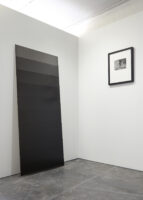
Amanda Williams (left) Untitled - After Ansel Adams 2017, (right) Court of the Patriarchs, Zion National Park, Utah, 1933 – 1942/2019 (test print) 2019
How do you go about developing new projects?
Developing new work often involves me getting in my car and going for a drive to scout for locations. While I was at art school I worked as a location scout for a film, tv and editorial location agency. This experience has certainly formed the way I develop ideas and find locations that interest me. I also engage in detailed research, focusing on particular landmarks, buildings and stories. Sometimes the research is personal, and a project develops out of this personal experience. Other times it’s purely circumstantial and I find a place or a person via academic research, such as Ansel Adams or Alice Manfield known as ‘Guide Alice’, who intrigues me for various reasons and sparks a new series of work. My work for PHOTO 2021 developed out of my interest in the Great Dividing Range and the landscape, people and places of historical significance within this region.
Who or what inspires you?
Travel, mountainous landscapes, brutalist and modernist architecture, geometry, geology, philosophy, books on photography (I am a photo history/theory nerd), strong women, (I have been introducing my daughter to ground-breaking, revolutionary ideas driven by women via the Rebel Girls book series – it is absolutely inspiring). Finally, and I hope this doesn’t sound too clichéd, I find peace and silence inspiring. I gravitate towards locations that inspire a sense of peace. I hope to cultivate peace as an inner quality and I believe that peace as a code for living, that is, feeling safe and secure in your home and in your environment in general, is something every human being deserves to experience.
What books are you currently reading?
I usually have a few books open at any time – at the moment I’m reading Dark Emu by Bruce Pascoe, The Miracle of Analogy or The History of Photography Part 1 by Kaja Silverman, Olive Cotton by Helen Ennis and re-reading Paths Uncharted by Balkrishna V. Doshi.
What music are you listening to?
I have quite eclectic musical taste and often my mood and the ‘feel’ of the music dictates what I play. I regularly return to Kate Bush, David Sylvian, Indian Raga music, I especially like Ravi Shankar and Anouska Shankar, Alice Coltrane, The Jesus and Mary Chain, Mazzy Star, Martha Wainwright, Aldous Harding and classical music if I am writing or researching. I need silence when I am taking photographs or working in the darkroom.
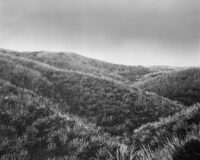
Amanda Williams
If the work you are presenting at PHOTO 2021 was a song, what would it be?
Ambient sound, silence (is that possible?).
Do you have any daily rituals?
I tend to visit the locations I photograph multiple times – so that is somewhat ritualistic. I’m not interested in merely passing through a location when I am traveling to make new work. I am deeply interested in engaging with every place I visit, engaging with the people who live there, understanding the stories that make that place unique. It is important to me that I know the Aboriginal language group for the traditional land I am on. I make contact with Aboriginal land councils, speak with Aboriginal elders where possible and ask permission to work on Country. This engagement with community, with Aboriginal elders, is important to me and has become a fundamental process and aspect of my work with Australian landscape. It is the way I respectfully acknowledge that I was born on, walk and work on unceded Aboriginal land.
What advice would you give to your 15 year old self?
I am not sure it would have been possible to give advice to my 15-year-old self. I wouldn’t have listened. I am grateful for the meandering paths I followed and the experience gained.
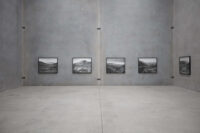
Installation photos of Amanda Williams, Alpine Bogs and Associated Fens, The Commercial, 2020